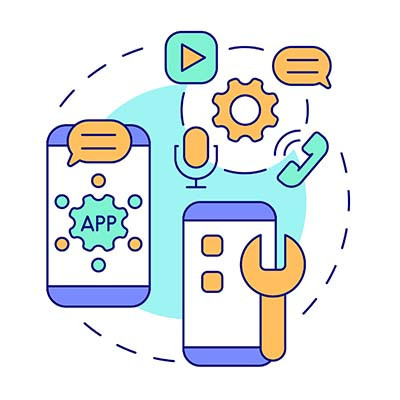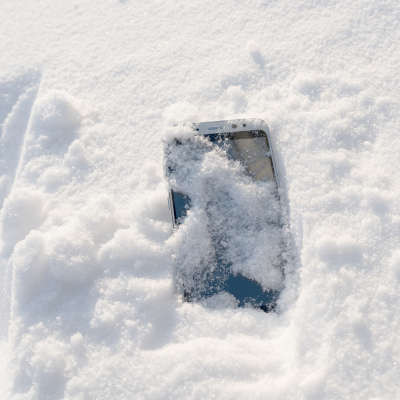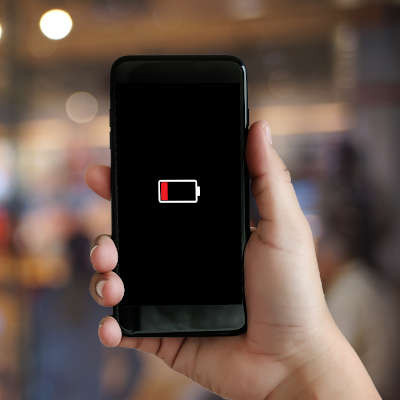We manage all types of files in the course of doing business. Some are more important than others and often need better security, and they need to be filed a certain way so that retrieval is fast and painless. Today, we will go through three of the best practices in file management to help you get a better handle on the ever-growing amount of data you have to store.
Network Synergy Blog
When it comes to exclusive user features, one of the better-known ones on the Apple side of the house is FaceTime, a video chat platform. Apple has however made certain features of FaceTime available to Android users, but they come with a catch. Let’s go over how an iPhone user can FaceTime with an Android user, even if some of the features are not quite there.
Anyone who wants to prioritize their privacy should be aware of the role the cache plays in such a thing. Your Google web browser—even on your smartphone—will store information about what you search so it can personalize your ads and recommendations, but if you would rather not have it do this all the time, you can clear your Android device’s Google search cache and set it up to auto-delete after a set amount of time has passed.
Have you ever cleared a notification on your phone, then gotten a sinking feeling a couple hours later, like you’ve missed something important? Well, worry no longer, for we will show you how to turn on your Android smartphone’s notification history feature. This should alleviate at least some of the stress you might experience about clearing notifications.
Modern mobile devices are a bit of a double-edged sword for today’s businesses: on the one hand, they are critical for the productivity that is required of today’s organizations, but on the other, they also come with the very real chance of security issues. The permissions you give (or don’t) to these applications can have an impact on this risk.
If you’ve lost or misplaced your smartphone (or tablet), it’s critical that you act quickly. Every second counts, especially if you suspect that your device was stolen. Here are the steps you need to follow immediately, even if you think you simply left it at a restaurant or in the backseat of a taxi.
Google’s Android operating system has about a 71.9 percent global market share, making it the most used smartphone operating system in the world. It’s well-trusted, and although the experience differs since phone manufacturers customize Android to fit their device, generally the operating system is pretty stable. This wasn’t the case for a massive number of users around March 22nd, 2021.
Nobody intends to lose their smartphone. For some of us, our mobile device is glued to our hands for a good portion of the day—it’s hard to imagine simply leaving it somewhere, right?
Mistakes happen. It doesn’t take more than a few minutes to set your smartphone up so you can track it down easily if you lose it.
If you need a reason to upgrade to Android 11, it comes with a highly useful selection of options when you access the menu that appears when you hold down the power button on your device. However, you have the option to add much more value to this menu. To do this, you’ll need to make a small investment in an automation-driven third-party application known as Tasker.
While you probably aren’t super enthusiastic about loaning out your mobile device right now, you may not have ever been. After all, you’re effectively handing over a bunch of personal data bundled into a convenient package. However, Android has had a feature that makes it substantially more secure to share your device for some time now.
Today’s smartphones are equipped with assorted ways that users can authenticate their identity, from the now old-fashioned PIN to basic biometrics. However, while these options are available on a wide range of phones, not all of them are equally secure. Let’s look a bit closer at these authentication measures to find out which is most effective.
How often do you find a message in your SMS inbox that has clearly come from a business, but you almost have to wonder, simply because the incoming number seems to be randomized? Google has taken notice of this challenge, and so has rolled out a means for businesses to confirm that they are in fact the ones sending a particular message.
Our smartphones have become an indispensable part of our personal and professional lives. As such, we often download various media to them that we want to find again later… unfortunately, this isn’t always so easy. For this week’s tip, we’ll go over where to find those files that you have downloaded.
There are over two billion active devices currently using Android. Most of them that have been purchased in the past year or so have come with, or have been subsequently updated to, Android 9.0 Pie. With the introduction of their newest mobile OS, Google has ensured that their software powers more mobile phones than any other software in the world. Today, we’ll take a look at some handy tips you can use to get the most out of your Android Pie experience.
Considering how often smartphones are replaced, you’re bound to have a couple of them stashed away for a rainy day. These devices are particularly helpful in the event that your smartphone breaks unexpectedly, but there are other purposes that you might want to keep in mind. Here are three ways you might be able to use your old mobile devices around the office.
Downloading an application on an Android device is fairly simple: access the Google Play store, find the app you want to download, and press the button that says install. However, it is also too easy to simply hit ‘Allow’ once the app starts asking for ambiguously-worded permissions. Today, we’ll examine what these permissions actually mean.
Android is a very common operating system on mobile devices around the world, and because of this, you won’t be surprised to hear that hackers are always trying to one-up security developers. If your business takes advantage of Android devices like smartphones or tablets, you’ll want to consider these 11 security tips that will help keep your organization safe.
Most people don’t think to try and print something out from their smartphone--particularly because it’s such a new concept. With smartphones quickly becoming just as fast as desktops from just ten years ago, it shouldn’t be such a stretch to suggest printing from them. Thanks to the cloud, you can use your Android smartphone to print something directly from the device.






















